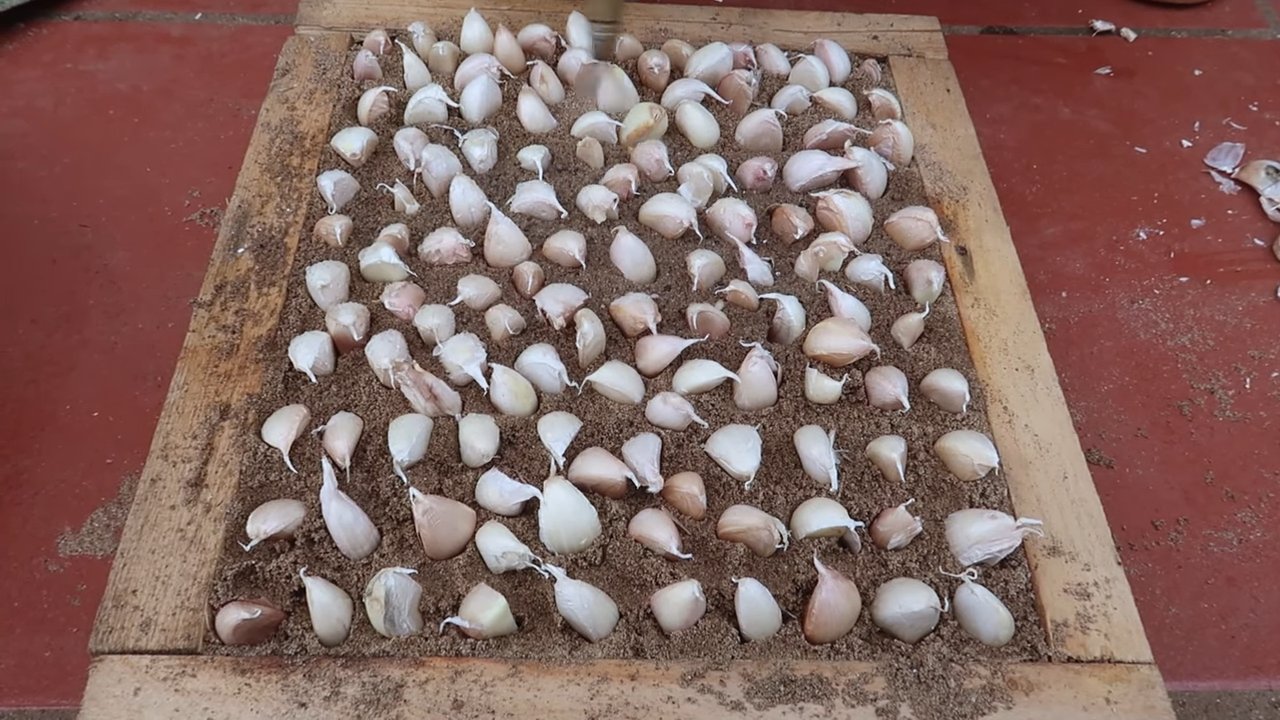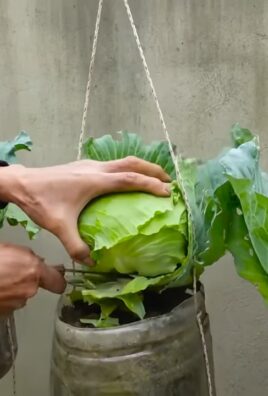Potato Growing Without Garden? Absolutely! Who says you need acres of land to enjoy the satisfaction of harvesting your own homegrown potatoes? I’m here to tell you that even if you’re living in a tiny apartment with just a balcony, or a suburban home with a postage-stamp-sized yard, you can still experience the joy of digging up your own spuds.
For centuries, potatoes have been a staple food around the world, originating in the Andes Mountains of South America. They’ve nourished civilizations and fueled economies. Now, you can bring that rich history and sustenance right to your doorstep, no matter how small your outdoor space is. This DIY guide is all about making potato growing accessible to everyone, regardless of their gardening limitations.
Let’s face it, buying potatoes from the store can be a bit bland. But imagine the taste of freshly dug, organically grown potatoes, bursting with flavor! Plus, with rising food costs and concerns about pesticides, knowing exactly where your food comes from is more important than ever. This potato growing without garden hack not only saves you money but also gives you control over what you’re putting on your plate. So, ditch the store-bought spuds and get ready to embark on a fun, rewarding, and surprisingly easy gardening adventure!

Growing Potatoes Without a Garden: Your DIY Guide for Growing in a Sack!
Hey garden friends! Who says you need a garden to enjoy fresh, homegrown potatoes? Today I’m going to show you how to easily grow potatoes in a sack – perfect for balconies, patios, or small yards! It’s easier than you think, and the result is super satisfying. Let’s get started!
What you need: The Material List
Before we begin, here is a list of everything you need for your potato sack project:
- Potatoes: Organic seed potatoes are best. Make sure they have “eyes” from which the shoots can grow. You can also use potatoes from the supermarket, but organic seed potatoes are often more resistant to diseases.
- Large sacks: Jute, potato, or grow bags are ideal. They should have a capacity of at least 50 liters, or even better, 75-100 liters. You can find them online, at garden centers, or even at farms.
- Potting soil: High-quality potting soil is important for good drainage and nutrient supply. You can also mix your own soil (see below).
- Compost: Compost is worth its weight in gold! It provides essential nutrients and improves the soil structure.
- Straw or hay: This helps to retain moisture in the sack and keep the potatoes clean.
- Watering can or hose: For regular watering.
- Knife or scissors: For cutting the sacks (if necessary).
- Optional: Fertilizer (organic or mineral) to give the potatoes additional support.
The Preparation: Everything for the Start
Before we start planting, we need to make a few preparations:
- Chitting the potatoes: About 2-3 weeks before planting, place the seed potatoes in a bright, cool place (approx. 10-15°C / 50-59°F). This will encourage them to form small, green shoots. This speeds up growth in the sack. You can lay them out in egg cartons or shallow trays.
- Prepare the sacks: If you are using jute sacks, you can moisten them a little before filling to help them take shape. Check the sacks for holes and repair them if necessary.
- Prepare the soil: Mix the potting soil with compost in a 2:1 ratio. This ensures a good supply of nutrients and drainage. If you want to mix your own soil, you can use garden soil, compost, and sand in a 1:1:1 ratio.
Growing: Step by Step to Potato Happiness
Now comes the exciting part: planting the potatoes!
- The first layer of soil: Fill the sack with about a 20 cm (8 inches) high layer of the soil-compost mixture.
- Place the potatoes: Place 3-4 chitted potatoes on the soil with the shoots facing up. Make sure they have enough space between them (approx. 15-20 cm / 6-8 inches).
- Cover the potatoes: Cover the potatoes with another layer of the soil-compost mixture, about 10 cm (4 inches) high.
- Watering: Water the soil well so that it is moist but not wet.
- The location: Place the sack in a sunny spot. Potatoes need at least 6 hours of sun per day.
- Hilling up: When the potato plants have grown to about 20 cm (8 inches) high, you need to “hill them up.” This means you cover the plants with soil so that only the top leaves are showing. This encourages the formation of new potatoes along the stems.
- Repeat: Repeat the hilling process every few weeks until the sack is almost full.
- Watering and fertilizing: Water the potatoes regularly, especially during dry periods. The soil should always be slightly moist. You can also fertilize the potatoes regularly with organic fertilizer to promote growth.
- Protection from pests: Watch out for pests like potato beetles or aphids. You can combat them with natural remedies, e.g., with neem oil or by picking them off by hand.
The Care: So Your Potatoes Thrive
Proper care is crucial for a rich harvest. Here are a few tips:
- Regular watering: Potatoes need a lot of water, especially during tuber formation. Make sure the soil is always moist, but avoid waterlogging.
- Fertilizing: Fertilize the potatoes regularly with organic fertilizer, e.g., compost tea or horn shavings. This provides important nutrients and promotes growth.
- Remove weeds: Regularly remove any weeds that grow in the sack. They compete with the potatoes for nutrients and water.
- Protection from frost: If frost is a threat, you should cover the sack with fleece or a blanket. Potato plants are sensitive to frost.
- Check for diseases and pests: Regularly check for signs of diseases or pests. The sooner you detect them, the better you can combat them.
The Harvest: The Reward for Your Effort
After about 3-4 months (depending on the variety), your potatoes are ready to harvest.
- The sign: The leaves of the potato plants will turn yellow and wither. This is a sign that the potatoes are ripe.
- The harvest: Carefully tip the sack over and collect the potatoes. You can also gently dig into the soil with your hands to find the potatoes.
- Storage: After harvesting, let the potatoes dry in the air for a few hours. Then store them in a cool, dark, and dry place. This way, they will last for several months.
Additional Tips and Tricks
- Variety selection: Choose potato varieties that are suitable for growing in a sack. Early potatoes are often a good choice as they mature faster.
- Multiple sacks: If you want to harvest more potatoes, you can plant several sacks.
- Sustainability: Use recycled sacks and organic fertilizer to make your potato growing more sustainable.
- Experiment: Try out different varieties and growing methods to find out what works best for you.
Common Problems and Solutions
- Small potatoes: If the potatoes remain small, it could be due to too little fertilizer or water. Fertilize and water regularly.
- Diseases: If the potato plants get sick, you should treat them with natural remedies. In case of a severe infestation, you may need to remove them.
- Pests: Combat pests early to avoid damage to the potato plants.
I hope this guide helps you to grow your own potatoes in a sack! It’s a great project that is fun and provides you with fresh, homegrown potatoes. Good luck and enjoy your meal!

Conclusion
So, there you have it! Growing potatoes without a garden isn’t just a whimsical idea; it’s a genuinely achievable and rewarding experience. We’ve explored a simple yet effective method that unlocks the potential of potato cultivation for anyone, regardless of their access to traditional garden space. This DIY potato growing trick is a game-changer for urban dwellers, apartment residents, or anyone with limited outdoor areas.
Why is this a must-try? Because it democratizes gardening. It removes the barriers of needing acres of land or specialized equipment. It’s an accessible, affordable, and surprisingly productive way to enjoy fresh, homegrown potatoes. Imagine the satisfaction of harvesting your own spuds, knowing you nurtured them from seed to table, all within the confines of a container. The taste of freshly dug, homegrown potatoes is simply unparalleled – a flavor that store-bought varieties can’t even begin to replicate.
Beyond the sheer joy of gardening, this method offers practical benefits. You have complete control over the growing environment, minimizing the risk of pests and diseases that often plague traditional potato crops. You can choose organic soil and fertilizers, ensuring your potatoes are free from harmful chemicals. Plus, it’s a fantastic way to recycle old containers and reduce your environmental footprint.
But the possibilities don’t end here! Feel free to experiment with different potato varieties. Russets, Yukon Golds, red potatoes – each offers a unique flavor and texture. You can also explore different container sizes and materials. While we’ve focused on using bags, you can also use large buckets, trash cans, or even repurposed storage containers. Just ensure they have adequate drainage.
Consider adding companion plants to your potato containers. Marigolds can help deter pests, while basil can enhance the flavor of your potatoes. Experiment with different combinations to find what works best for you.
And don’t be afraid to get creative with your growing medium. While a standard potting mix is a good starting point, you can also incorporate compost, peat moss, or even shredded leaves to enrich the soil and improve drainage.
We wholeheartedly encourage you to try this DIY potato growing trick. It’s a fun, educational, and ultimately delicious experience. Once you’ve harvested your first batch of homegrown potatoes, you’ll be hooked!
We’d love to hear about your experiences. Share your photos, tips, and stories in the comments below. Let’s create a community of container potato growers and inspire others to embrace the joy of homegrown food. What variety did you plant? What container did you use? What challenges did you face, and how did you overcome them? Your insights can help others succeed in their own potato-growing adventures.
So, grab some seed potatoes, a container, and some soil, and get ready to embark on a rewarding journey of homegrown goodness. Happy growing!
Frequently Asked Questions (FAQ)
What kind of potatoes should I use?
You’ll want to use seed potatoes, which are potatoes specifically grown for planting. These are different from the potatoes you buy at the grocery store, which may have been treated to prevent sprouting. Seed potatoes are available at most garden centers and online retailers. You can use a variety of potatoes, such as Russet, Yukon Gold, Red Pontiac, or fingerling potatoes. Choose a variety that you enjoy eating and that is well-suited to your climate. If you can’t find seed potatoes, you can use organic potatoes from the grocery store, but be sure to look for ones that have “eyes” (small sprouts) on them. Cut the potatoes into pieces, ensuring each piece has at least one eye. Let the pieces dry for a day or two before planting to prevent rotting.
What size container do I need?
The size of the container will depend on the number of potato plants you want to grow. A good rule of thumb is to use a container that is at least 20 gallons in size for each plant. This will give the potatoes plenty of room to grow. You can use a variety of containers, such as grow bags, plastic bins, or even old trash cans. Just make sure the container has drainage holes to prevent the soil from becoming waterlogged. The bigger the container, the more potatoes you’ll likely harvest.
What kind of soil should I use?
Potatoes need well-draining soil that is rich in organic matter. A good potting mix will work well. You can also amend the soil with compost, peat moss, or aged manure. Avoid using garden soil, as it can be too heavy and may contain pests or diseases. The ideal soil pH for potatoes is between 6.0 and 6.5. You can test the soil pH using a soil testing kit, which is available at most garden centers.
How often should I water my potato plants?
Water your potato plants regularly, especially during hot, dry weather. The soil should be kept moist but not soggy. Water deeply whenever the top inch of soil feels dry to the touch. Avoid overwatering, as this can lead to root rot. A good way to check if your plants need water is to stick your finger into the soil. If the soil feels dry an inch or two below the surface, it’s time to water.
How much sunlight do potato plants need?
Potato plants need at least six hours of sunlight per day. Choose a location that receives plenty of sunlight. If you live in a hot climate, you may need to provide some afternoon shade to prevent the plants from overheating. If you’re growing your potatoes indoors, you’ll need to supplement with grow lights.
When should I harvest my potatoes?
You can start harvesting potatoes when the plants begin to flower. At this point, you can harvest “new potatoes,” which are small and tender. For larger potatoes, wait until the plants have died back completely. This usually takes about 2-3 weeks after flowering. To harvest, gently dig around the base of the plant and lift the potatoes out of the soil. Be careful not to damage the potatoes.
What are some common problems with growing potatoes in containers?
Some common problems with growing potatoes in containers include pests, diseases, and nutrient deficiencies. Pests such as aphids, potato beetles, and flea beetles can damage the plants. Diseases such as early blight and late blight can also affect potato plants. To prevent these problems, choose disease-resistant varieties, use organic pest control methods, and ensure the plants have adequate drainage. Nutrient deficiencies can also occur if the soil is not rich enough in nutrients. To prevent this, fertilize the plants regularly with a balanced fertilizer.
Can I grow potatoes indoors?
Yes, you can grow potatoes indoors, but it requires providing the right conditions. You’ll need a large container, well-draining soil, and plenty of light. You’ll also need to water the plants regularly and fertilize them as needed. Indoor potato growing often requires supplemental grow lights to provide the necessary amount of light for healthy growth and tuber development.
What are some variations on this method?
You can experiment with different container types, such as fabric grow bags, which allow for better air circulation and drainage. You can also try using different growing mediums, such as a mix of compost, peat moss, and perlite. Another variation is to use a “potato tower,” which is a tall container with holes in the sides. As the potato plants grow, you add more soil to the tower, encouraging the plants to produce more potatoes along the stem.
How do I store my harvested potatoes?
Store your harvested potatoes in a cool, dark, and dry place. A root cellar is ideal, but a basement or garage will also work. Avoid storing potatoes in the refrigerator, as this can cause them to become sweet. Potatoes should be stored away from apples and bananas, as these fruits release ethylene gas, which can cause potatoes to sprout. Properly stored potatoes can last for several months.




Leave a Comment